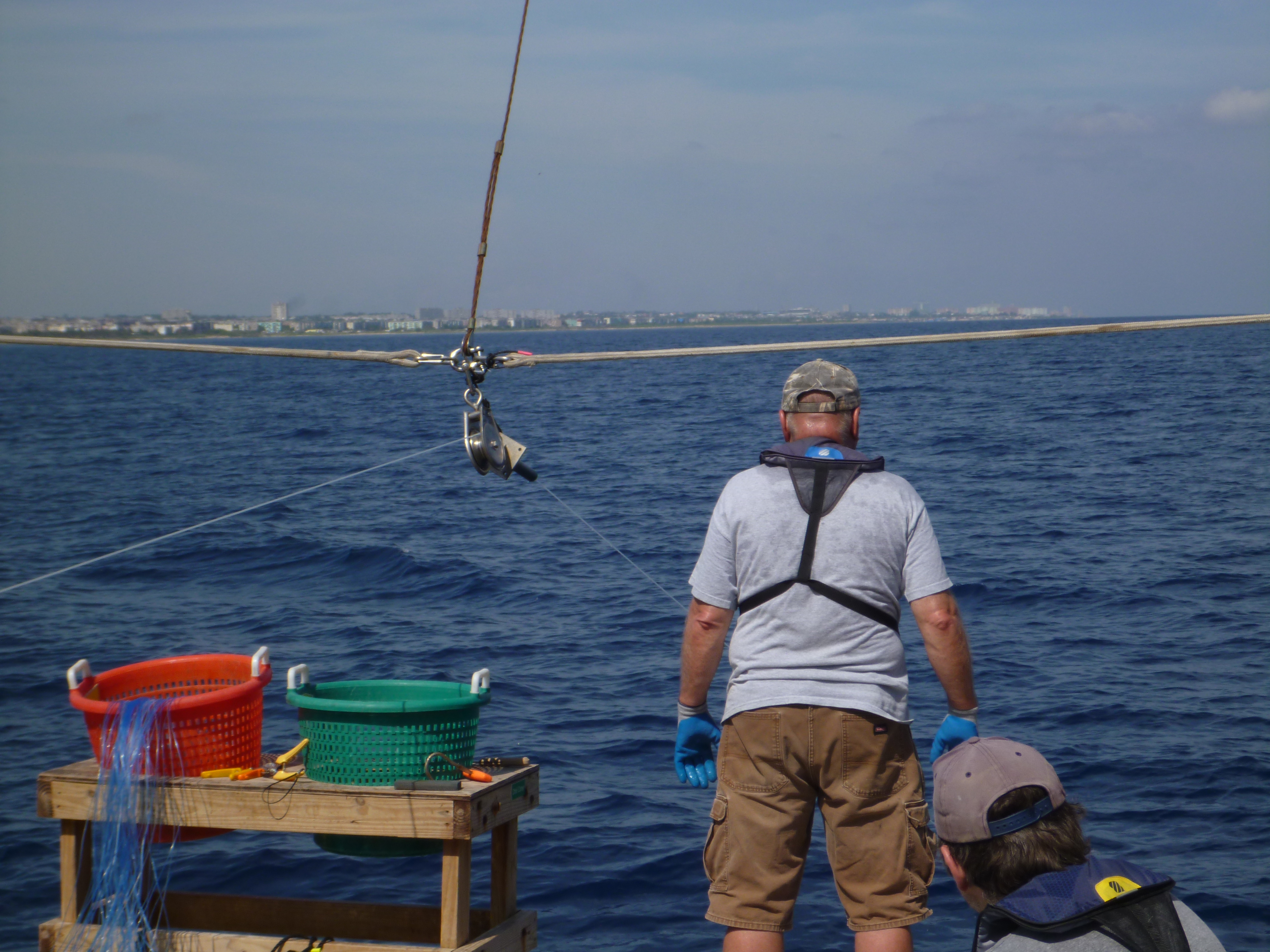R/V Weathebird Log-Kristina Deak
USF College of Marine Science | Molecular biology and genetics of golden tilefish | Fish collection and dissection
How did your anticipation of this cruise compare with previous ones to the northern or southern Gulf?
I’ve worked with the Murawski lab in the northern Gulf since June 2012, so I’m familiar with the type of organisms we catch in different depths and regions there. When we expanded our sampling efforts to Mexican waters in 2015-2016, I think we were all surprised at how the size and assemblage of organisms we caught changed. Cuba was a completely different animal, since the depths change rapidly and we weren’t really sure what sort of bottom type we would be dealing with. I wasn’t sure what we would find, but I was very excited at the prospect of seeing some different species and interacting with the Cuban scientists!
Did the daily activities feel any different from other cruises? Did having land close to sampling stations give you a new perspective?
Our catch rate of target species was significantly lower than we anticipated and the bottom type was challenging for our gear, so a great deal of time was spent tying new hooks each day. Nearly every sampling day we were in sight of land, which helped put our sampling efforts in context. When working with samples from around the Gulf it’s important to keep track of what ecological, environmental, and anthropogenic factors can impact the fish you collect. In the northern Gulf and parts of Mexico we’re concerned with proximity to pipelines and oil rigs, while in other regions we think about where natural seeps occur, or where river runoff can bring in contaminants from land. Seeing the (typically pristine) shoreline in cuba helped distinguish our sites from those either offshore forest, a town, a port, or a mine.

How did working closely with Cuban scientist change the way you view the Gulf of Mexico or your specific studies?
Discussing research projects and aspirations with the Cuban scientists helped reaffirm the notion of everyone using their talents and resources in the most effective ways possible to build on our global scientific knowledge and understanding of the Gulf ecosystem. There are some areas of research that their universities are excelling at, and others that our graduate program at USF has different capacities for and can handle in unique ways. It made me grateful for the GoMRI funding, travel, and research opportunities that C-IMAGE has afforded us!


